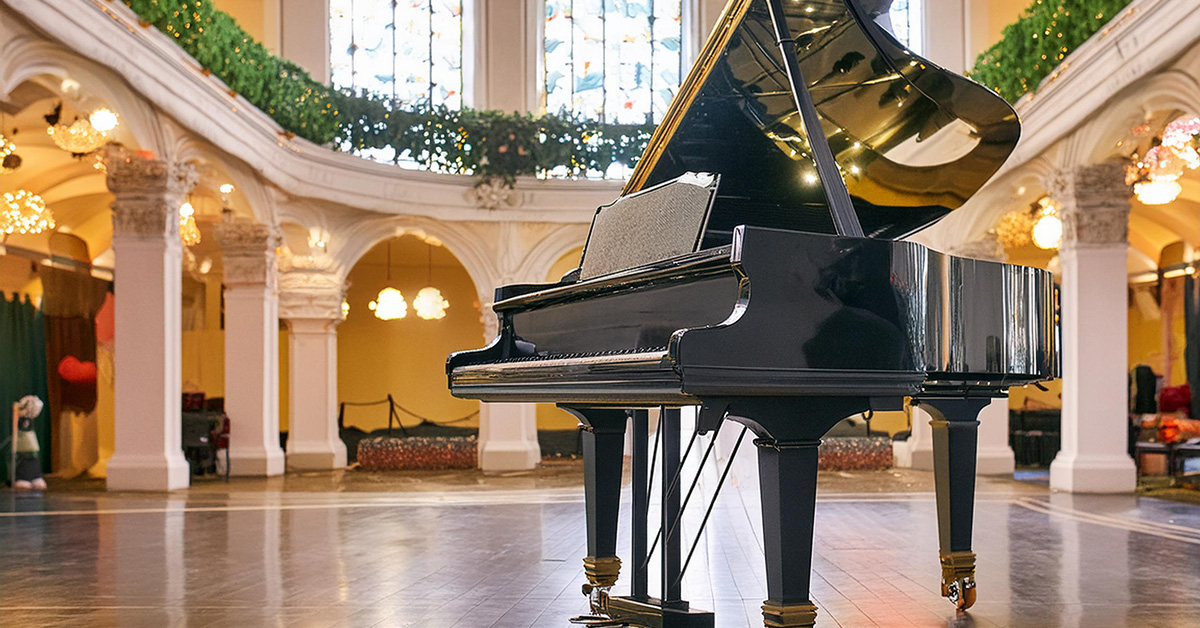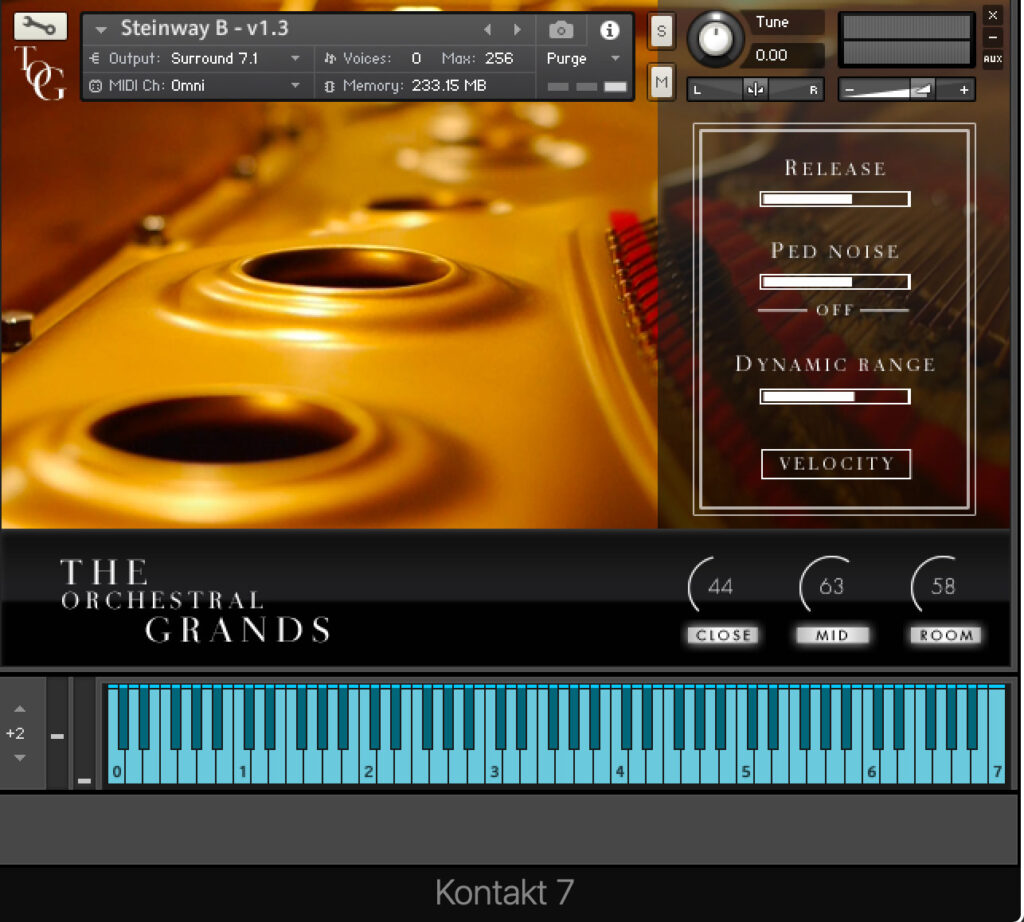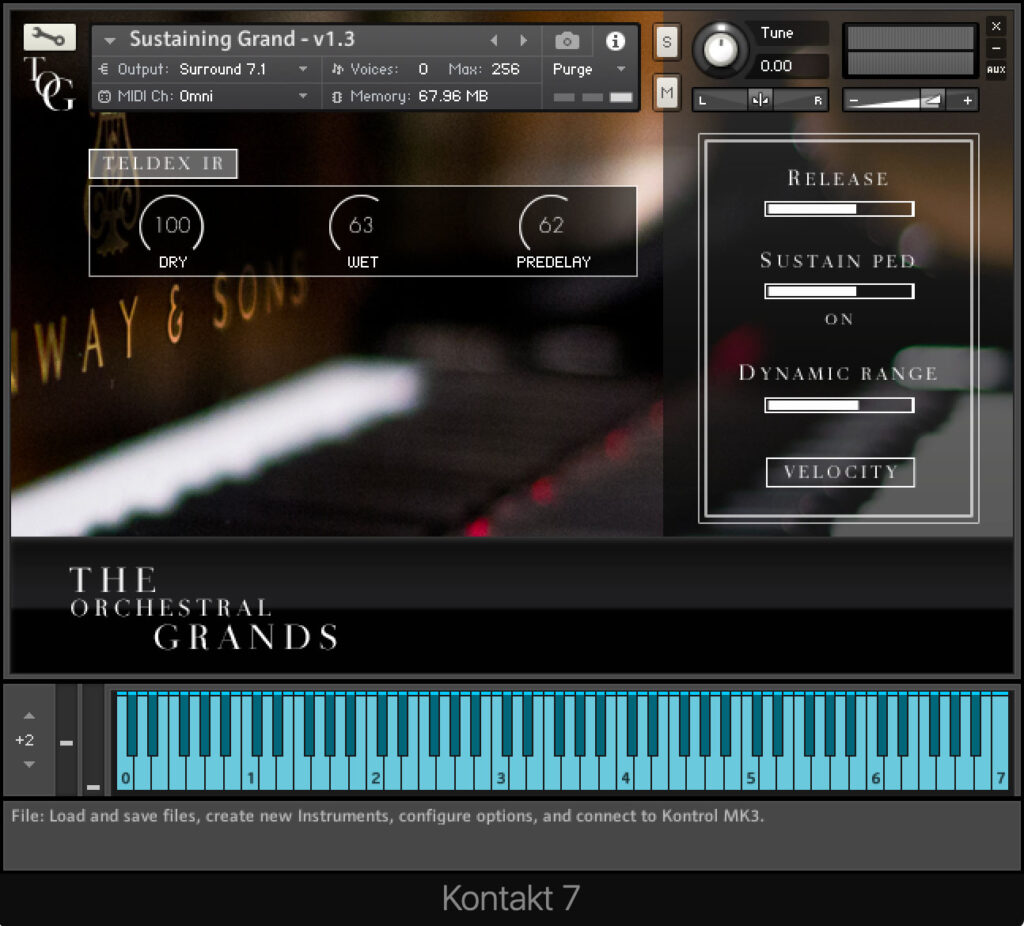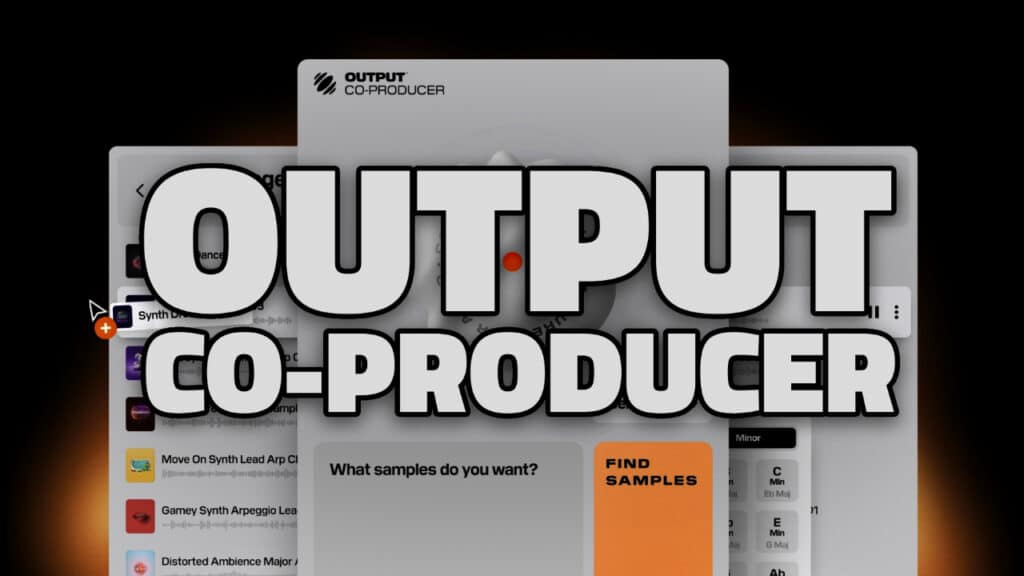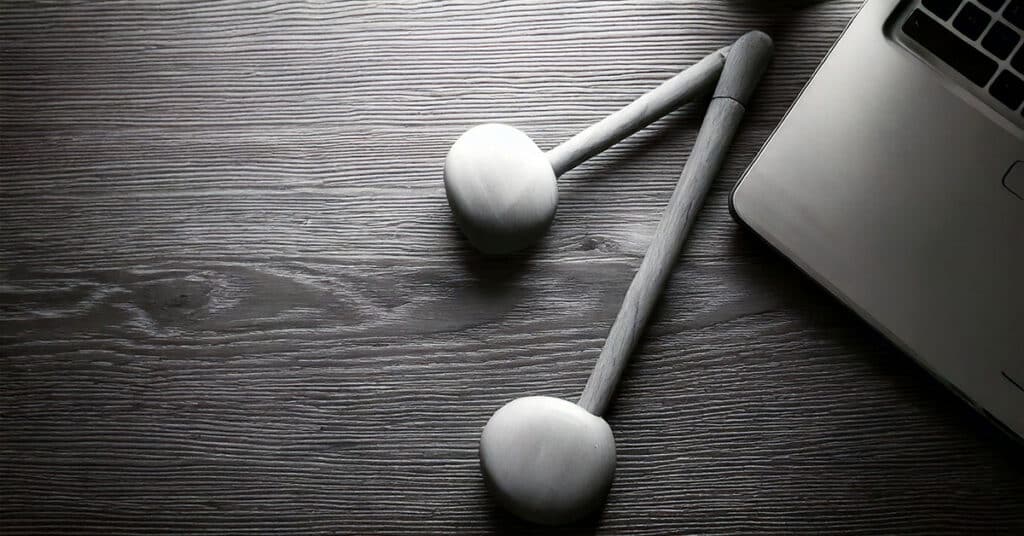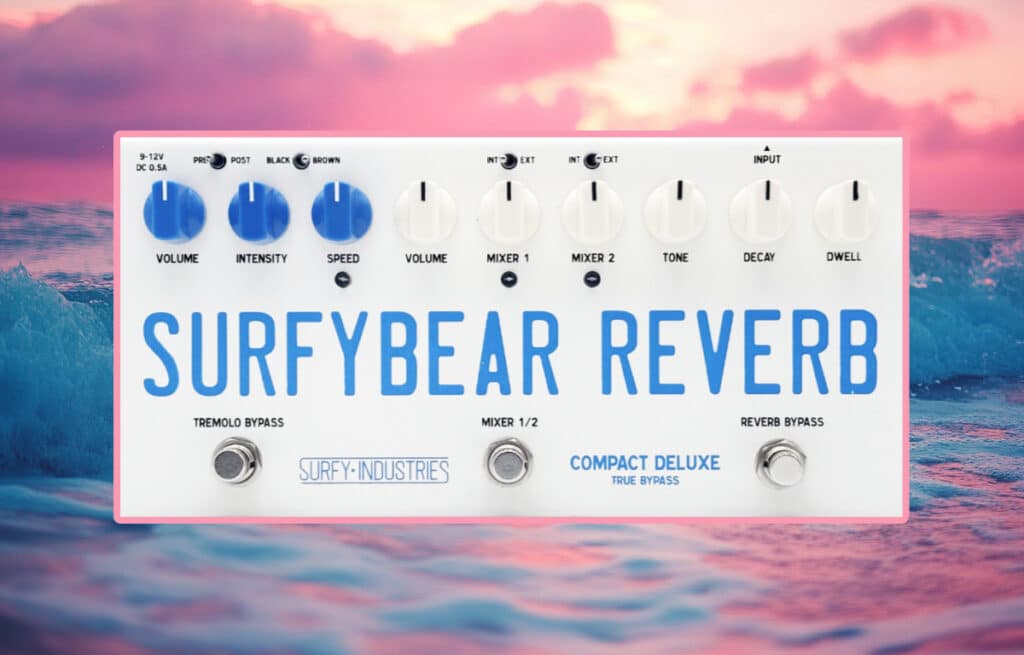In this review, I’ll have a look at the Orchestral Grands collection of piano libraries from Orchestral Tools. One of the most versatile instruments ever invented, the modern piano possesses the ability to produce everything from subtle lyricism to aggressive percussiveness, from gentle sparseness to enormous width, and from complex rhythms to lush sustained harmony. Because the piano is such a formidable instrument to record, the use of piano sampling software is often an attractive and practical alternative to the potential expense of recording the real thing.
The challenges of recording a real piano are many. Limitations include the quality of the instrument, microphones, pre-amps, and recording space, not to mention the knowledge of how to set things up. Sampled pianos simplify this process greatly, and today’s top libraries feature multiple velocity layers, mechanical noises, pedal noises, and numerous customizable parameters including attack, tone, reverb, dynamic range, and more. The result is the possibility of creating a recording that is difficult to distinguish from an actual acoustic piano session.
THE ORCHESTRAL GRANDS FROM ORCHESTRAL TOOLS
Orchestral Grands is a collection of 3 instruments designed specifically for use in an orchestral context. This is unique in that most other sampled piano programs are recorded with a close-miking technique that yields a very dry and unnatural sound, fitting better into a pop mix or requiring added reverb. In the case of the Orchestral Grands, the sampled Steinway B and Steinway D sound incredibly realistic, even without the addition of artificial reverb. For classical and/or orchestral productions, these pianos are hard to beat in their realism.
Recorded at the Teldex Scoring Stage in Berlin, both the Steinway B and D have 3 mic positions to choose from (close, mid and room). The 3 mic arrays can be mixed and matched to create a customized sound suitable to a particular project.
Below are audio samples demonstrating the sounds of each selectable mic setup. The fourth example is a mixture of all of the mics.
(excerpt from Etudes by E. Rautavaara – “Kvartit):
Steinway B room
Audio PlayerSteinway B mid
Audio PlayerSteinway B close
Audio PlayerSteinway B all mics
Audio PlayerTHE ORCHESTRAL GRANDS INTERFACE
The interface is relatively simple with just a few controls:
- Release – controls the volume of the release samples
- Ped Noise – controls the sound of the damper leaving the strings when depressing the pedal
- Dynamic Range – adjusts the dynamic range of the instrument
- Velocity – allows for customization of the velocity curve
- Close/Mid/Room – allows the user to select and adjust the volume of each mic array
The sampled Steinway B and Steinway D have an identical interface and controls, however, each piano has its own unique tone and character. The larger Steinway D is an 8’11” concert grand, considered by many to be one of the finest pianos available. The Steinway B is somewhat smaller at 6’11,” but equally coveted, and often found in teaching studios and smaller venues. Both were recorded with orchestral positioning in mind, designed to blend seamlessly into a concerto-style setting. Below is a short sample of the Steinway D.
Steinway D (from Fanfares, G. Ligeti)
As a jazz pianist, I believe these instruments sound terrific in a jazz context as well, despite the fact they were not designed specifically for this purpose. Acoustic jazz recordings can also benefit from a pleasing room sound as opposed to strictly close miking, so again the mid and room mic options are an asset here. Below is an example of such an application on the Steinway D:
Steinway D (from Ruby, My Dear – T. Monk)
Also included in the Orchestral Grands package is a third instrument called the Sustaining Grand. Edited through an analogue chain (Chandler Zener Limiter, A-Designs Hammer EQ, Electrodyne 501 preamps) this is a beautiful option for a solo piano context, or when a more intimate sound is called for. While this instrument does not include 3 mic positions (only a close mic position), it does include adjustable reverb in the form of the Teldex IR. This wonderful sounding piano may be my favorite of the three. It also uses less CPU power, owing to the fact that it utilizes only one mic position. Below is a short sample (from Beethoven’s Pathetique Sonata):
Sustaining Grand (from Beethoven’s Pathetique Sonata)
Audio PlayerThe Teldex IR (impulse response) Wet/Dry control replaces the close/mid/room mic positions. Pre-delay is also included. Increasing pre-delay will make the instrument sound closer, while decreasing the value does the opposite. The tone and response of this instrument is intoxicating.
ADDITIONAL THOUGHTS
Despite being somewhat of an older library, the Orchestral Grands collection is stunning in its realism and an absolute pleasure to play and hear. The natural sense of spaciousness allowed by the room and mid-mic positions really set these instruments apart.
If I could add just one feature to this collection it would be half-pedaling. Hopefully, this will be added in future versions of the library.
The Steinway D in particular can be particularly hungry for CPU if you don’t have a super-fast computer or tons of RAM. Turning off the pedal noise feature is a helpful solution that will alleviate some of those demands.
Despite a couple of minor complaints, I consider these pianos an excellent choice for orchestral and classically oriented mixes, as well as for jazz settings.
Allow me to leave you with one final example!
Improv on the Sustaining Grand
Audio PlayerOTHER NOTES
The examples above demonstrate a raw performance with no MIDI editing, external reverb, EQ, or plugins of any kind.
- Requires full version of Kontakt.
- Includes 25 GB of samples.
- Staccatos with 6 round robins are included on the Steinway D
- 4 Velocity layers
ABOUT THE AUTHOR
Andrew Nixon is an accomplished jazz pianist and composer whose music has been broadcast on jazz radio stations around the country and the world. After several years of playing keyboards in rock and blues bands, he began studying jazz with pianist/composer Paul Hofmann (Eastman School of Music) and later earned a Masters degree in Music Theory from the State University of New York at Buffalo, where he also studied classical piano and composition. In addition to performing, composing, recording, and mixing, Nixon teaches privately to a full roster of 50+ students. His first two jazz trio albums of original compositions with the group Nixon, Croft and Goretti. have garnered critical acclaim:
“Nixon’s composing is as seemingly effortless as his playing, which makes light of what are often quite complex tunes.” Chris May (All About Jazz)
“Apart from composing, (Andrew) Nixon is a stand out pianist who swings like the long gone greats but still lives in the present” (BebopSpokenHere).
You can listen to his music here.
EXTRAS
Want to win a free license to Kontakt 7? Be one of the first 1000 people to FOLLOW WAVEINFORMER ON INSTAGRAM to be automatically entered to win one of three full-version Kontakt 7 licenses! Read more.
Assess your knowledge of essential audio concepts using our growing catalog of online Quizzes.
Explore more content available to Subscribers, Academic, and Pro Members on the Member Resources page.
Not a Member yet? Check the Member Benefits page for details. There are FREE, paid, and educational options.

